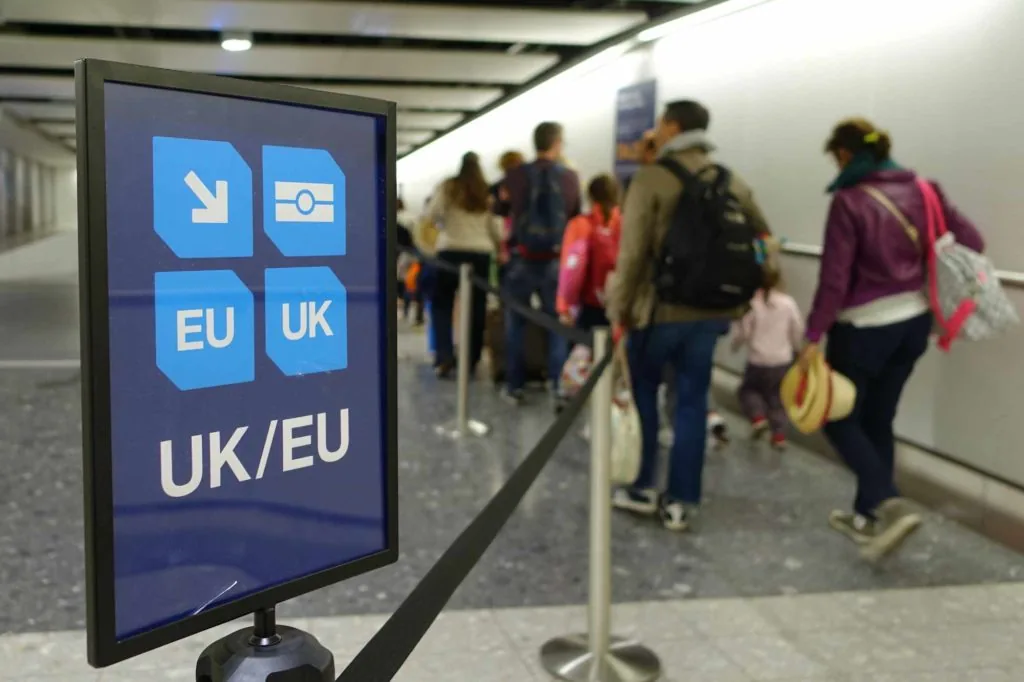
Employment issues and COVID-19 as the UK moves into the ‘delay’ phase
The COVID-19 outbreak continues to create lots of issues for employers. This page provides answers to many of the questions our employment team are getting and resources for employers to help them in their response.
If you have a question that isn't answered here, let me know - or, sign up to the COVID-19 employment webinar that Karen Bates and I are running on Tuesday.
COVID-19 Background
‘COVID-19’ is the disease caused by a new form of ‘coronavirus’ that emerged in China in December 2019 and has now been declared a pandemic by the World Health Organisation (meaning a new disease for which people do not have immunity and which has spread around the world beyond expectations) and which is now taking hold across the UK with a rapid spread of confirmed cases. Click here for a live tracker tool which monitors worldwide cases of coronavirus.
It is understood and/or being reported that if a person infected with Coronavirus coughs or exhales and is within a metre of someone else, the other person could catch the virus by breathing in droplets of infected fluid. The incubation period is between two and fourteen days and common signs of infection include a fever, a cough and difficulty in breathing.
There is currently no vaccine to prevent COVID-19 and the best way to prevent infection is to avoid exposure to the virus. Public Health England’s (PHE’s) strategy to contain the spread of COVID-19 is twofold, firstly the provision of hygiene guidance and, secondly self-isolation for particular groups of people. On 25 February 2020, PHE published guidance on COVID-19 for employers and businesses which should be being regularly refreshed.
The UK government’s approach has been to apply a four-phase method to tackling COVID19 – specifically, ‘containment’, ‘delay’, ‘mitigation’ and ‘research’ (with the research phase running concurrently with the other three phases).
The containment phase was initially designed to try and catch cases early and trace all contacts in the hope of avoiding the spread of the disease. If containment did not work and the number of cases rose dramatically (which is now the case), then the approach then moves to the second phase: ‘delay’.
The delay phase involves delaying the spread of the illness within in the UK for as long as is reasonably possible, broadly via the use of “social distancing” tactics (including self-isolation – see below) to prevent accelerated transmission where no vaccine is yet available.
COVID-19 Background
‘COVID-19’ is the disease caused by a new form of ‘coronavirus’ that emerged in China in December 2019 and has now been declared a pandemic by the World Health Organisation (meaning a new disease for which people do not have immunity and which has spread around the world beyond expectations) and which is now taking hold across the UK with a rapid spread of confirmed cases. Click here for a live tracker tool which monitors worldwide cases of coronavirus.
It is understood and/or being reported that if a person infected with Coronavirus coughs or exhales and is within a metre of someone else, the other person could catch the virus by breathing in droplets of infected fluid. The incubation period is between two and fourteen days and common signs of infection include a fever, a cough and difficulty in breathing.
There is currently no vaccine to prevent COVID-19 and the best way to prevent infection is to avoid exposure to the virus. Public Health England’s (PHE’s) strategy to contain the spread of COVID-19 is twofold, firstly the provision of hygiene guidance and, secondly self-isolation for particular groups of people. On 25 February 2020, PHE published guidance on COVID-19 for employers and businesses which should be being regularly refreshed.
The UK government’s approach has been to apply a four-phase method to tackling COVID19 – specifically, ‘containment’, ‘delay’, ‘mitigation’ and ‘research’ (with the research phase running concurrently with the other three phases).
The containment phase was initially designed to try and catch cases early and trace all contacts in the hope of avoiding the spread of the disease. If containment did not work and the number of cases rose dramatically (which is now the case), then the approach then moves to the second phase: ‘delay’.
The delay phase involves delaying the spread of the illness within in the UK for as long as is reasonably possible, broadly via the use of “social distancing” tactics (including self-isolation – see below) to prevent accelerated transmission where no vaccine is yet available.
Whilst delaying the spread of the disease within the UK should increase the chances of the NHS being able to cope with the expected influx of cases, there is no doubt that the imminent large scale rise in confirmed cases across the UK, and the knock-on effects of this will have (and are already having) an enormous effect on businesses within the UK – certainly in respect of having to identify an appropriate balance between seeking to maintain the health and safety of their staff whilst also keeping the business operational on a day to day basis.
Steps for employers ahead of any COVID-19 cases in their business
This article lays out the steps that employers may need to take depending on the size and nature of their workforce.
Working from Home guidance during the COVID-19 outbreak
Working from home is now one of the core government-recommended strategies – we have addressed some of the considerations for employers here.
Self-isolation, time off and statutory sick pay
Employers are already approaching us with a number of questions about self-isolating employees, managing absence and the situation regarding sick pay. We explore some of those issues in this article.
Managing headcount issues resulting from COVID-19
Unfortunately, the increasingly stringent quarantine measures and the fall in demand which COVID-19 is causing for some business may lead to some employers having no choice but to address head count. We lay out some strategies for dealing with this here.
What does a business need to do if someone shows symptoms?
If a person starts to show a high temperature (i.e. 37.8C+) or a new, continuous cough at work (or presents themselves for work with such symptoms), the unwell person should be instructed to go straight home immediately and self-isolate per the relevant government NHS guidance and be directed to NHS 111 Online's coronavirus page.
For contacts of a suspected case in the workplace, no restrictions or special control measures are presently required while laboratory test results for COVID-19 are awaited. There is no need to close the workplace or send other staff home at this point. Until the outcome of any potential test results are known therefore, there is technically no specific action that the workplace needs to take save that it would be advisable to clean all surfaces that the person has come into contact with including:
- all surfaces and objects which are visibly contaminated with body fluids.
- all potentially contaminated high-contact areas such as toilets, door handles, telephones, computer keyboards etc.
All waste that has been in contact with the individual, including used tissues, should be put in a plastic rubbish bag and tied when full. The plastic bag should then be placed in a second bin bag and tied.
Public areas where a symptomatic individual has passed through and spent minimal time in (such as corridors) but which are not visibly contaminated with body fluids do not need to be specially cleaned and disinfected.
What if someone with confirmed COVID-19 has recently been in the workplace?
PHE guidance in this regard at the time of publication of this note is that closure of the workplace is not recommended.
The management team of the office or workplace will be contacted by the PHE local Health Protection Team to discuss the case, identify people who have been in contact with them and advise on any actions or precautions that should be taken.
A risk assessment of each setting will be undertaken by the Health Protection Team with the lead responsible person. Advice on the management of staff and members of the public will be based on this assessment, and the local Health Protection Team will provide the relevant staff with advice.
The Health Protection Team will also be in contact with the case directly to advise on isolation and identifying other contacts and will be in touch with any contacts of the case to provide them with appropriate advice.
Advice on cleaning of communal areas such as offices or toilets will be given by the Health Protection Team.
Travel for work-related and overseas assignments
The latest government guidance is that everyone should stop non-essential contact with others and stop all unnecessary travel. Nations across the world have imposed travel restrictions to curb the spread of the coronavirus. An article (reportedly being updated daily) setting out latest details of the various restrictions in place can be found here.
If an employee was/is due to be travelling to an area where there is a higher risk of COVID-19 infection, therefore, then the employer will need to consider whether this is 'essential' and whether this is compatible with its duty to safeguard the employee’s health.
Restrictions on personal travel
Some employers have introduced emergency rules or policies prohibiting employees from travelling to areas where the risk of COVID-19 infection is higher. Few contracts of employment will include an express term giving the employer power to restrict an employee’s personal travel plans, but this may be justified by the employer’s duty to protect the health and safety of its wider workforce.
Justifying restrictions on personal travel may be more difficult if it includes countries or areas which are not the subject of a travel advice issued by the Foreign and Commonwealth Office (FCO) and to which airlines continue to operate flights However, employers who have particularly powerful reasons to ensure that their employees do not become infected by COVID-19 (for example health service providers or education providers) may be able to demonstrate that it is reasonable for them to impose more stringent travel restrictions.
Any employer deciding to impose restrictions on personal travel must be careful to ensure that they are not directly discriminatory on grounds of race or nationality and that any indirect discrimination on those grounds can be justified.
Employer liability for discrimination and harassment by employees
Since COVID-19 reached the UK, there have been reports of targeting of people of Chinese origin. No racial group should be singled out for less favourable treatment.
Should such treatment occur at work, employers can be liable for harassment or discrimination by their employees towards other employees, unless they have taken reasonable steps to prevent such conduct. Reasonable steps typically include having equality and diversity policies in place, appropriate training having been given on those policies, and ensuring that inappropriate behaviour is tackled.
This article does not constitute legal advice. Legal advice should be sought to address specific circumstances. Information on COVID-19 is changing on a daily basis and the first port of call for public health guidance should be Public Health England.











